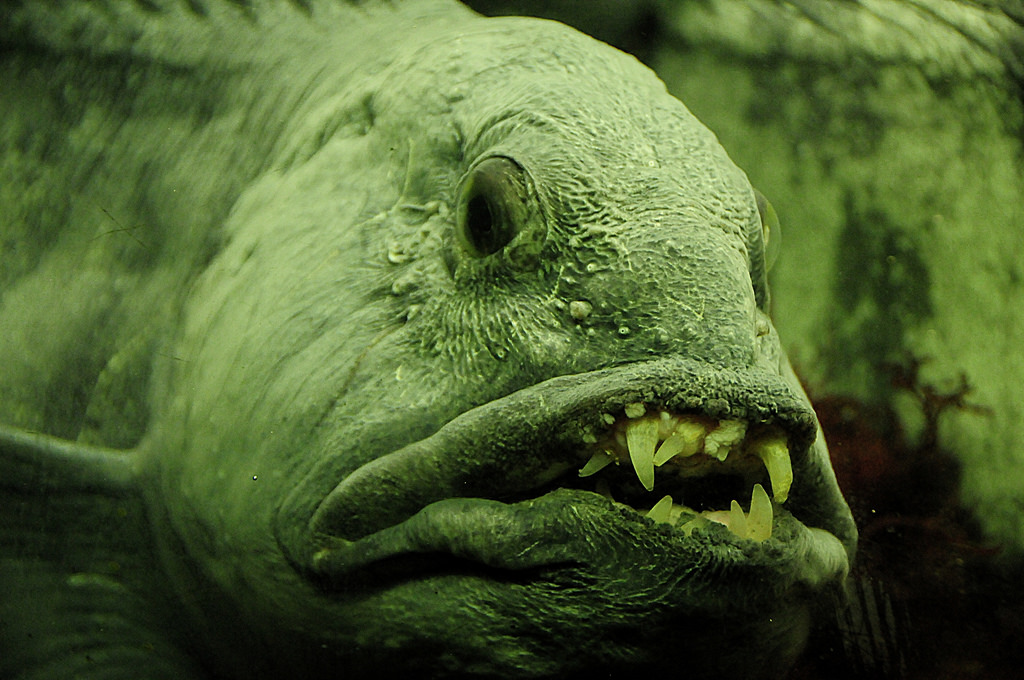The ocean is home to myriad creatures weird and wonderful. Some are certainly charismatic, like orca or the fluorescent sea slug – ìCostasiellaî - photographed in Bali last year, which some say has a strong resemblance to English children’s television character Ermintrude the cow from the Magical Roundabout. Others invoke revulsion. Orca may be known as the ‘wolves of the sea’ for their hunting ability, but for looks, Atlantic wolffish certainly earns its name.
Credit Kamil Porembiński/Flickr (CC BY-SA 2.0)
Atlantic wolffish’s (Anarhichas lupus) most distinct features are its large, extensive set of dentures. At the front of their mouth, and often protruding even when it is closed, are four to six strong, wolf-like teeth. Behind lie several rows of molars, and down the throat lay scattered, serrated teeth. Even before wolffish have hatched from their eggs, conical teeth are present. These large fish, which reach up to lengths of 1.5 meters, and a weight of 18 kilograms, are no vegetarians. Their powerful jaws and armoury of teeth make light work of shellfish and crustaceans, and well as urchins, and starfish, and other bottom-dwelling species.
Aesthetics (or rather lack of them) aren’t the only fascinating thing about this fish. After crunching away on the hard shells of their prey, it is hardly surprising that their teeth do wear. Unlike most fish, which gradually renew their teeth, each year Atlantic wolffish lose all their teeth, replacing them all at the same time. Atlantic wolffish have been captured at various stages of tooth-replacement – some with a few old and broken teeth, some with no teeth at all, and some with a few new teeth in various stages of development. Interestingly, captive wolffish fed on soft-bodied prey end up with abnormal tooth development. Like so many things in wolffish biology, the reasons why currently elude us.
This article was written for (and can be read in full in) The Marine Professional - a publication of the Institute of Marine Engineering, Science & Technology (IMarEST)

